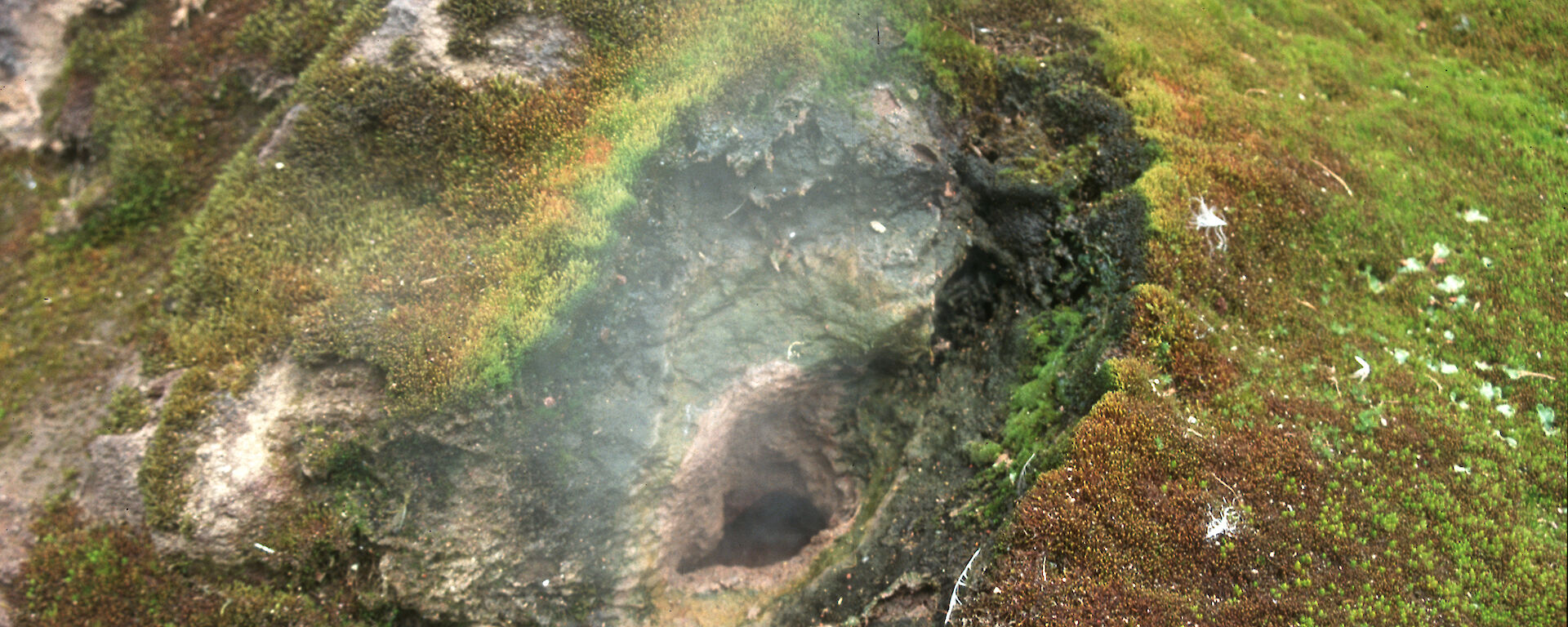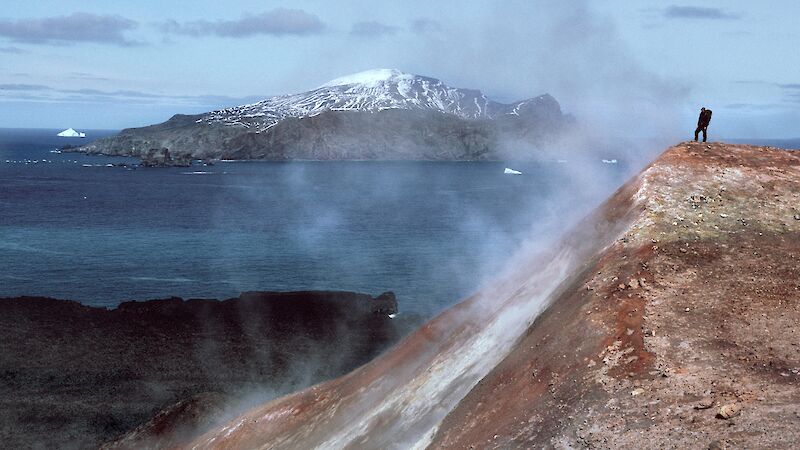Antarctic volcanoes and other geothermal areas may have provided a refuge for biodiversity through past ice ages, according to new research published in March in Proceedings of the National Academy of Sciences.
Australian Antarctic Division spatial ecologist, Dr Aleks Terauds, and Australian National University evolutionary biologist, Dr Ceridwen Fraser, led the research, which showed that species richness is greater close to volcanoes, and decreases with distance.
It is the first time scientists have provided hard evidence to support a long-held hypothesis that geothermal areas could provide a toe-hold for life during the Last Glacial Maximum, about 20 000 years ago, when the continent was more heavily glaciated than today.
‘Geothermal activity could have maintained ice free areas during the last ice age, providing a substrate for organisms to live on,’ Dr Terauds said.
‘Importantly, this substrate would have remained exposed over centuries, allowing time for organisms to evolve and disperse.
‘If this hypothesis is true, we would expect to see more species closer to volcanoes and a subset of the same species further away.’
To find out, Drs Terauds and Fraser, along with colleagues from Australia, New Zealand and the UK, used nearly 39 000 records of Antarctic species to model and compare the biodiversity of volcanic sites with non-volcanic sites on both the Antarctic peninsula and continental Antarctica.
The species records, which were collected over decades by many researchers, were grouped broadly into plants (mostly mosses), fungi (mostly lichens) and invertebrates (such as mites, tardigrades and springtails).
Sixteen Antarctic volcanoes are known to have been active since the last ice age, forming three general clusters on the northern Antarctic Peninsula, Marie Byrd Land (West Antarctica) and Victoria Land (East Antarctica). Geothermal areas associated with these active craters could have included heated ground and ponds, steam fields, fumaroles and ice caves formed by steam.
Nine of these volcanic sites were selected for the analyses, along with a region of ‘hot rocks’ (naturally occurring radioactive granites) in the Larsemann Hills.
A range of non-geothermal sites were also selected around the continent, based on the location of good biodiversity records. All volcanic and non-volcanic sites were located within 200km of the coast, to remove any variations due to altitude.
Dr Terauds then used a suite of models to look for patterns of species richness within a 100km radius of each site.
‘We wanted a big buffer around the geothermal site to incorporate both the potential glacial refuge and areas within the unassisted dispersal range of most taxa,’ he said.
The models accounted for variables that could affect biodiversity, including temperature, geographic location, sampling bias and the size of the geothermal area.
The study authors saw a clear geothermal effect on species richness on the Antarctic Peninsula for plants and fungi, but not for invertebrates — most likely because peninsula records for invertebrates are poor.
‘On continental Antarctica, there were clear geothermal effects on all species groups; with more species closer to the geothermal sites,’ Dr Fraser said.
‘These results support our hypothesis that species have been expanding their range and gradually moving out from volcanic areas since the last ice age.’
While there are still many questions to be answered, the study authors said that geothermal regions may represent diversity ‘hotspots’ in Antarctica, providing a focus for future conservation efforts, as human-induced environmental changes continue to affect Antarctica.
Fraser C, Terauds A, Smellie J, Convey P and Chown S (2014). Geothermal activity helps life survive glacial cycles. PNAS, doi: 10.1073/pnas.1321437111
Wendy Pyper
Corporate Communications, Australian Antarctic Division



